Overcoming obstructions to learning
Overcoming obstructions to learning
It’s the age-old question – what can you as a teacher, instructor, coach or trainer do to make sure that your audience actually learns?
If there is one concern that brings dread to the heart of the instructional designer (or ID), it is that there are so many ways for instruction to fail. Factors such as environment, lack of good material, vastly diverse audiences and poor design, to name just a few, all impact getting the message across. You can control some of these effects by the choices you make as the ID. But there are others that require support and buy-in from other parties to overcome.
What the obstructions are
If you have read some of our other articles, you will be aware that we’re particularly interested in managing cognitive load. Understanding how the brain works when it’s learning, and how to overcome the constraints on working memory, has been a key part of our journey to creating great courses. Along the way, the importance of schemas and building on already embedded knowledge has been a constant feature.
Another obstruction is poor or limited content. Since an ID and the general development team are rarely experts in the field they are developing in, they have to rely on SMEs or Subject Matter Experts to inform their content. An ‘expert’ in a field is usually a busy person who must be persuaded to share their knowledge and insight. Creating this buy-in from the SME is vital but frequently demanding!
A third thing that can be a battle to overcome is to keep the learning in bite-sized chunks. Business training and adult learning preferences both require just-enough learning. In other words, adults want only the information that they need to know, and businesses want focused training for specific subjects. Neither party has the time or the focus to expend on peripheral information.
Fortunately, all three of these issues can be addressed together to create a great learning solution. It’s helpful to explore them in more detail to find out how to get the best use out of each concept.
Schemas

Schemas are how our brains manage the limitations of working memory, which can only hold a maximum of seven bits of information at a time. It’s useful to understand some of the structures and tools the brain uses to capture and store new information. If you know what these are, you can build instruction in the most advantageous way to present content to those functions.
The human brain uses schemas to structure knowledge. What that means is that as we get to know and deeply understand something, we don’t have to store every single detail in a separate place. Instead, we link separate pieces of information together to create one whole.
To illustrate, when we learn to read, we first learn each letter of the alphabet, probably by name before we even know what each letter looks like. Next, we learn to relate the shape of a letter to a certain sound. Then we learn what happens when we put two or more letters together. Finally, we become so familiar with the sounds that groups of letters make together that we can stop sounding out each word and we automatically read groups of words for meaning rather than spelling. Each step of this process involves creating schemas that combine increasingly complex actions and ideas into simpler and simpler structures.
That sounds contradictory, but when was the last time you consciously had to think about changing gears when driving or choosing a programme on your microwave? Both of those actions involve complicated steps that you originally had to think about step by step. Now, however, your integrated schemas see each process as one entity and your actions become effortless. Schemas enable us to treat multiple things as one thing.
How Schemas impact instructional design
Instruction that can be built on existing knowledge opens up space in the working memory, which in turn, assists better schema acquisition. Schemas simplify learning by allowing learners to quickly interpret new incoming information. For example, if you already know what is meant by the term ‘schema acquisition’, then you don’t have to spend time looking up the definition. In other words, the more a learner already knows about something, the less their working memory has to hold, and the easier it is for them to absorb and retain new information.
To build on existing knowledge, the essential first step when designing instruction is to find out what your targeted learners already know. How do you do that? This is where the SME comes in.
SMEs – a valuable resource

Bite-sized learning
How do you use the two previous elements to solve the third requirement for just-enough learning? Understanding schemas and the advantage of building on already embedded knowledge will direct you to the essential knowledge path. The SME should be able to give you enough insight into the required skill or knowledge set for you to determine what your students already know. This in turn allows you to focus on what they still need to know and eliminate extraneous background. The result will be adult-orientated bite-sized learning. Everybody wins!Conclusion
Ultimately, you can’t plan for every possible obstruction to learning. But you can make sure that you structure and build your content for the most effective outcomes. Preparing content to promote schema construction by building on prior knowledge is one step. Getting buy-in from management and SMEs is another. Understanding your audience and their learning preferences is a third step towards excellent course creation. Of course, you could always consult us – we’re SMEs in all these things.
Dennis Lamberti
Head of Content Development
As a founding member of Media Works, a company that helped educate over 1.5 million adults in South Africa, Dennis has honed his expertise in developing learning programmes for nearly 30 years . His focus is now on learning pedagogy and cognitive load balancing.
